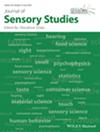Ranking task versus intensity scales, what is the best method to evaluate odor-induced taste enhancement?
Abstract
Odorants in food or beverages might enhance the taste. This phenomenon is called Odor-Induced Taste Enhancement (OITE). OITE has been shown using taste-intensity visual analog scales (VAS). VAS is often criticized because it is prone to halo-dumping effects. We compared VAS and ranking methods to evaluate OITE in people living with normal-weight or obesity. Sweet apple juice and salty green-pea soup were spiked with either vanillin or bacon odorants to produce OITE. In the VAS experiment, saltiness, sweetness, sourness, bitterness and the global aroma intensities were evaluated for each base with and without the odorants. The ranking task consisted in ranking from the lowest to the highest sweetness/saltiness intensities, three references with increasing tastant concentration and a target solution with the lowest tastant concentration and the odorant. VAS highlighted OITE neither in the apple juice nor in the green-pea soup, in no group. The ranking method revealed an OITE in the green-pea soup in both groups, and only the group with obesity experienced OITE in the apple juice.
Practical Applications
The ranking task appears as an optimal method to highlight OITE and is sufficiently sensitive to demonstrate subtle differences related to participants' weight status. The ranking task is easy to perform, does not require training and does not imply a high number of participants to be statistically powered. Odor-Induced Taste Enhancement is a strategy that might be employed to significantly reduce salt, and sugar, while maintaining an acceptable taste intensity, at home as well as in food formulation by the industry.


 求助内容:
求助内容: 应助结果提醒方式:
应助结果提醒方式:


